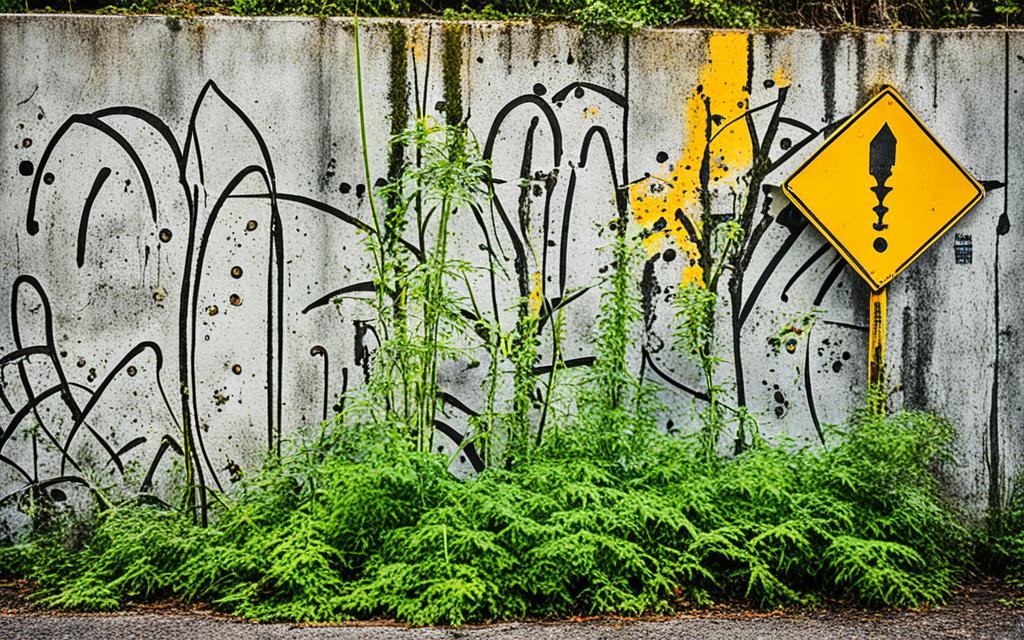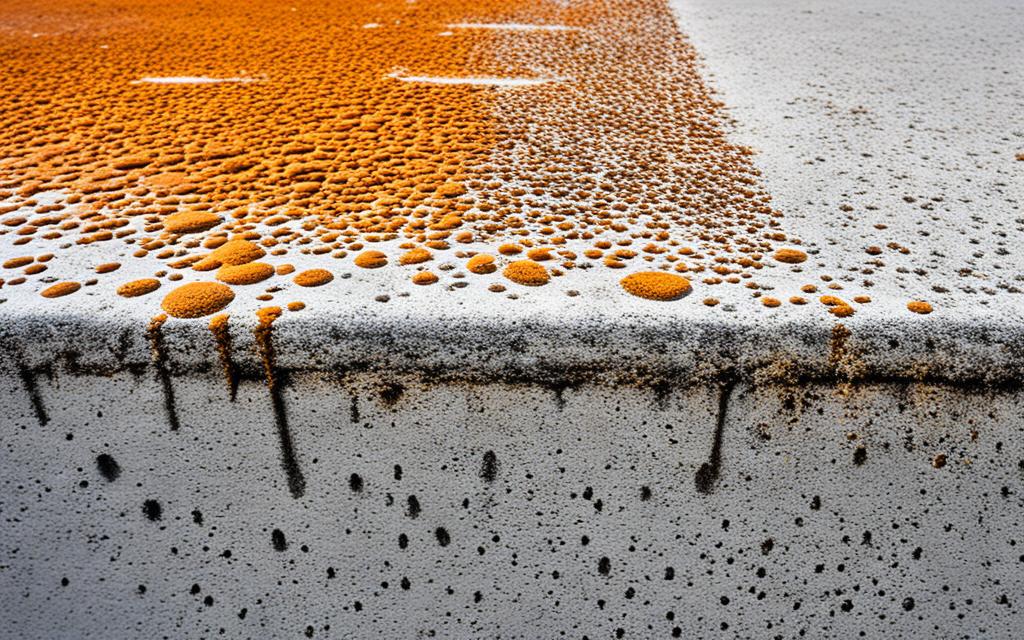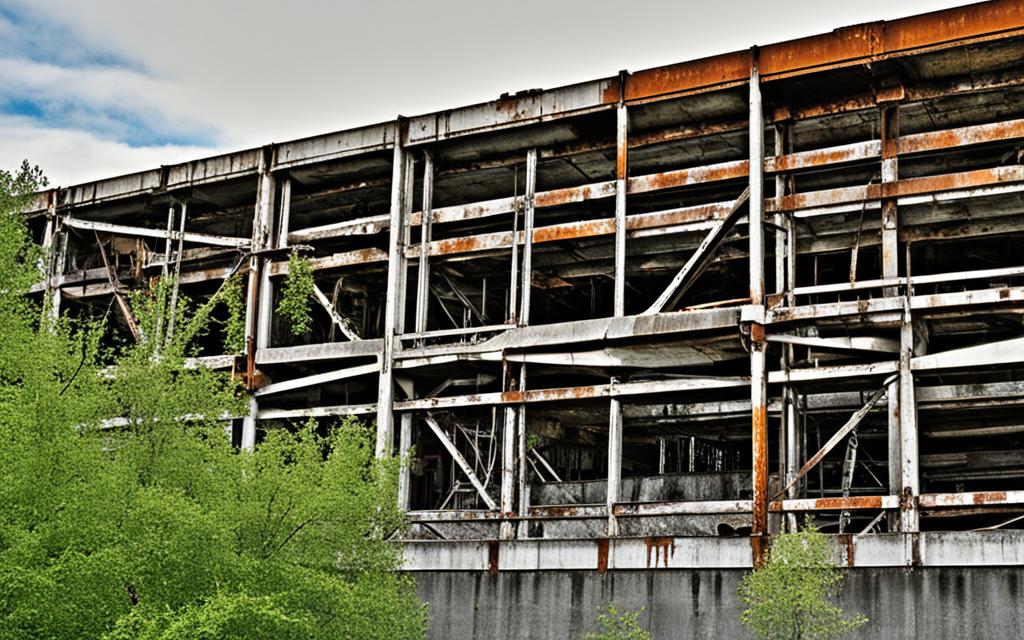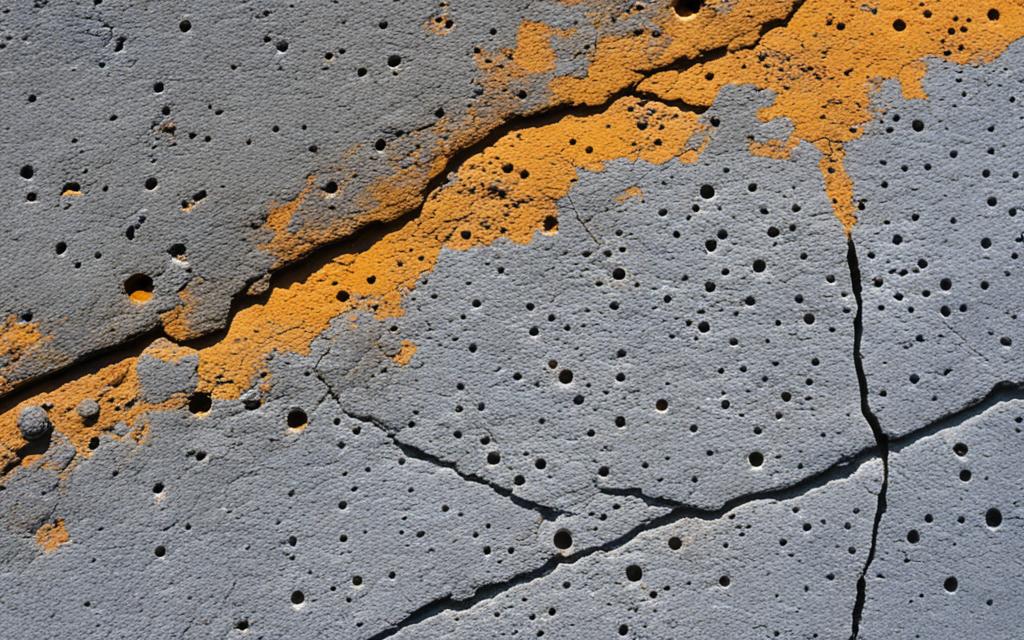Factors Influencing The Long-Term Corrosion Performance In Concrete Structures

Concrete structures are susceptible to corrosion, which can lead to significant deterioration over time.
Understanding the factors that influence long-term corrosion performance is crucial for maintaining the durability and integrity of these structures.
Corrosion in concrete structures is primarily caused by the interaction between steel reinforcement and the surrounding environment.
When steel is exposed to an electrolyte, such as moisture, in the presence of different energy levels and a metallic connection, corrosion occurs.
The corrosion process involves the flow of charges, resulting in the loss of electrons from the steel and the formation of rust.
Several factors influence the occurrence and progression of corrosion in concrete structures.
The water-cement ratio plays a critical role in determining the strength and permeability of the concrete.
A high water-cement ratio can increase permeability and make the concrete more susceptible to corrosion.
Shrinkage in concrete can also contribute to corrosion, as it leads to cracking and provides pathways for corrosive agents to reach the steel reinforcement.
The quality of materials used in concrete construction, including aggregates, steel reinforcement and wedge anchors, can impact the corrosion resistance of the concrete.
The permeability of the concrete, moisture levels, and the strength of the concrete also play a role in the long-term corrosion performance.
Understanding these factors and their influence on corrosion is essential for developing appropriate maintenance and prevention strategies.
By considering the water-cement ratio, shrinkage, quality of materials, permeability, moisture, and strength of the concrete, engineers and construction professionals can ensure the long-term durability and integrity of concrete structures.
Key Takeaways:
- Concrete structures are susceptible to corrosion, which can lead to significant deterioration.
- Factors influencing corrosion in concrete structures include the water-cement ratio, shrinkage, quality of materials, permeability, moisture, and strength of the concrete.
- A high water-cement ratio and shrinkage can increase the susceptibility of concrete to corrosion.
- The quality of materials used in construction and the permeability of the concrete also impact corrosion resistance.
- Understanding these factors is crucial for developing preventive strategies and ensuring the long-term durability of concrete structures.
Corrosion of Embedded Metals
Reinforcing steel corrodes due to the presence of chloride ions, exposure to H2S gases, and the presence of oral microbiota.
Corrosion of embedded metals in concrete can lead to concrete deterioration and pose a significant threat to the integrity of structures.
To mitigate this corrosion, it is crucial to place crack-free concrete with low permeability and provide sufficient concrete cover for the reinforcing steel.
The alkaline environment of concrete provides steel with corrosion protection through the formation of a passivating layer.
This layer acts as a barrier, preventing the corrosive agents from reaching the steel and minimizing the risk of corrosion.
However, the destruction of the passivating layer can occur due to reduced alkalinity or increased chloride concentration in the concrete, making it vital to implement preventive measures to maintain the longevity and durability of the concrete structures.
“Corrosion of embedded metals in concrete can lead to concrete deterioration and pose a significant threat to the integrity of structures.”
Causes of Concrete Corrosion
The causes of concrete corrosion are influenced by several factors that can impact the strength and durability of the material.
Understanding these causes is essential for effectively preventing and mitigating the risks associated with concrete corrosion.
1. Water-Cement Ratio: The water-cement ratio is a critical parameter that affects the quality of concrete. Excessive water in the mix can increase permeability, making the concrete more vulnerable to corrosion. The ingress of moisture and corrosive agents can lead to the degradation of reinforcing steel, compromising the structural integrity of the concrete.
2. Shrinkage: Shrinkage in concrete occurs due to the evaporation of water during the curing process. This shrinkage can result in the development of cracks, providing pathways for corrosive agents to reach the reinforcement steel. Cracks expose the steel to moisture, oxygen, and other aggressive substances, accelerating the corrosion process.
3. Quality of Material: The quality of materials used in concrete construction is crucial for determining its corrosion resistance. Inferior quality aggregates or steel reinforcement may contain impurities that increase the likelihood of corrosion. It is essential to use high-quality materials that can withstand exposure to corrosive environments.
To prevent concrete corrosion, it is imperative to carefully manage the water-cement ratio, minimize shrinkage through proper curing techniques, and ensure the use of high-quality materials in construction.
“Excessive water in the mix can increase permeability, making the concrete more vulnerable to corrosion.”
“Cracks expose the steel to moisture, oxygen, and other aggressive substances, accelerating the corrosion process.”

- Water-Cement Ratio
- Shrinkage
- Quality of Material
Prevention of Concrete Corrosion
To prevent concrete corrosion, utilizing high-quality concrete is of utmost importance.
This entails employing the right mix design, adhering to proper curing techniques, and using appropriate aggregates.
The quality of concrete directly impacts its resistance to corrosion, making it essential to prioritize its composition.
Epoxy coatings can serve as effective barriers, safeguarding the concrete from corrosive elements.
These coatings form a protective layer, shielding the concrete and reinforcing steel from exposure to moisture, chemicals, and other factors that contribute to corrosion.
By reducing the contact between the concrete and its surrounding environment, epoxy coatings significantly enhance the durability and longevity of concrete structures.
Polymeric fibres offer another layer of protection against concrete corrosion.
These fibres reinforce the concrete matrix, enhancing its crack resistance and minimizing shrinkage cracking.
By reinforcing the concrete, polymeric fibres improve the overall durability and structural integrity of the material, making it more resistant to corrosion-induced deterioration.
In addition to selecting the right materials and protective coatings, proper workmanship also plays a critical role in preventing concrete corrosion.
Ensuring adequate cover to reinforcement is crucial as it helps safeguard the steel from corrosive agents by maintaining a barrier between the reinforcement and the surrounding concrete.
“By using non-corrosive metals and applying concrete coatings, the prevention of concrete corrosion becomes a comprehensive approach to safeguarding the integrity of the structure.”
Using non-corrosive metals in the construction of reinforcing elements further reduces the risk of corrosion.
Stainless steel and other non-corrosive materials provide excellent durability, enhancing the lifespan of the concrete structure.
By incorporating these preventive measures, such as selecting high-quality concrete, employing epoxy coatings and polymeric fibres, utilizing proper workmanship, and choosing non-corrosive metals, the risk of concrete corrosion can be effectively mitigated.
This comprehensive approach improves the overall quality and integrity of concrete structures, ensuring long-term durability and resistance to corrosion.
Effects of Corrosion on Concrete Structures
Corrosion of reinforcement in concrete structures can have significant detrimental effects, including cracking, delamination, and spalling of the concrete.
When reinforcement steel corrodes, it expands and exerts pressure on the surrounding concrete, leading to the formation of cracks.
These cracks not only compromise the structural integrity of the concrete but also provide pathways for corrosive agents to further attack the reinforcement, exacerbating the corrosion process.
The decrease in alkalinity of the concrete resulting from corrosion can also have a negative impact on the bond capacity between the concrete and the reinforcement.
The alkaline environment of concrete typically provides the steel with corrosion protection through the formation of a passivating oxide layer.
However, when corrosion occurs, the passivating layer is destroyed, weakening the bond between the concrete and the steel reinforcement.
Furthermore, the depositing corrosion volume, known as rust, can cause structural degradation by increasing the volume of the reinforcement, leading to spalling and delamination of the concrete cover.
This can further expose the reinforcement to corrosive elements, accelerating the corrosion process.

The microstructure of the reinforcement steel can also influence its corrosion behavior in the alkaline environment of concrete.
The presence of impurities, variations in composition, and the formation of intermetallic compounds can all affect the susceptibility of the steel to corrosion.
Therefore, the quality of the reinforcement steel plays a crucial role in determining its corrosion resistance and the overall durability of the concrete structure.
Corrosion in Concrete Sewers
In concrete sewers, corrosion is a significant issue that leads to severe structural deterioration over time.
One of the primary causes of corrosion in these sewer systems is the presence of hydrogen sulfide gas, which is produced by sulfate-reducing bacteria.
This gas reacts with the concrete surface, resulting in the formation of a porous corrosion layer that can easily be washed away.
This porous layer makes the concrete susceptible to acid attack and expansion reactions, further compromising its integrity.
Additionally, effluents containing sulfur-rich compounds exacerbate the deterioration of the concrete, accelerating the corrosion process.
The mass loss of concrete exposed to sewage flushing is influenced by the flow velocity and duration of flushing.
Higher flow velocities and longer flushing durations increase the mass loss and contribute to the overall degradation of the concrete structure.
To illustrate this further, consider the image below:
As shown in the image, the corrosion in concrete sewers can lead to severe structural damage, posing significant challenges for maintenance and repair.
Corrosion on Carbon Concrete
Corrosion on carbon concrete has significant implications for the durability and structural integrity of concrete structures.
When carbon concrete is exposed to corrosive elements, such as carbon dioxide, it undergoes a series of detrimental changes, leading to a decrease in compressive strength, an increase in carbonation depth, and an overall increase in porosity.
The corrosive attack on carbon concrete affects its carbonation resistance, which refers to its ability to withstand the penetration of carbon dioxide into its interior.
Carbonation occurs when carbon dioxide reacts with the alkaline components of concrete, resulting in the reduction of pH and the breakdown of protective layers.

“Corrosion on carbon concrete can have severe consequences, compromising the structural stability of concrete structures over time.”
As corrosion progresses, the carbonation depth increases, exposing the reinforcing steel to more corrosive agents, further exacerbating the deterioration process.
The formation of rust and the expansion caused by the corrosion products contribute to the increased porosity of the carbon concrete.
This compromises its overall strength and resilience.
Understanding the effect of corrosion on carbon concrete is essential for implementing effective preventive measures and maintenance strategies.
By utilizing corrosion-resistant materials, applying protective coatings, and implementing regular inspections, the long-term durability and performance of carbon concrete structures can be ensured.
Factors Affecting the Corrosion of 316L Stainless Steel Reinforcement in Concrete
The corrosion of 316L stainless steel reinforcement in concrete is influenced by several factors that contribute to its degradation over time.
Key factors include the presence of chloride ions, exposure to H2S gases, and the presence of oral microbiota.
Chloride-induced corrosion is a common cause of deterioration in reinforced concrete structures.
When chloride ions come into contact with stainless steel reinforcement, they can penetrate the protective oxide layer on the steel’s surface, leading to the initiation and propagation of corrosion.
This process is particularly accelerated in environments with high chloride concentrations, such as coastal areas or structures exposed to de-icing salts.
“The presence of chloride ions in concrete can significantly increase the corrosion rate of stainless steel reinforcement.”
Exposure to H2S gases is another significant factor that can affect the corrosion rate on the surface of 316L stainless steel reinforcement.
H2S gases are commonly encountered in wastewater treatment plants, sewer systems, and other environments where organic matter decomposes.
The corrosive nature of H2S gases can accelerate the degradation of the protective oxide layer on stainless steel reinforcement, leading to increased corrosion rates.
Additionally, the presence of oral microbiota can contribute to the corrosion of stainless steel reinforcement in concrete.
Oral microbiota, found in environments such as sewer systems or heavily trafficked areas, can promote the formation of localized corrosion sites by creating microenvironments with varying pH values and increased chlorides.
“The combined effects of chloride ions, H2S gases, and oral microbiota can accelerate the corrosive processes affecting stainless steel reinforcement in concrete.”
Understanding these factors is crucial for effective corrosion management and long-term durability of concrete structures.
By implementing preventive measures such as selecting corrosion-resistant materials, providing adequate concrete cover, and controlling exposure to chloride ions and H2S gases, the integrity and service life of reinforced concrete structures can be significantly improved.
It is important for engineers, construction professionals, and facility managers to be aware of these factors and implement appropriate corrosion protection strategies to ensure the longevity and safety of concrete structures.
Effect of Corrosion on Durability of Concrete
Corrosion has a significant effect on the durability of concrete structures.
One of the key consequences of corrosion is an increase in the permeability of concrete.
When corrosion occurs, the protective layers of concrete are compromised, allowing water, moisture, and corrosive agents to penetrate the structure.
This increased permeability leads to a host of issues, including cracking, spalling, and eventual crumbling of the concrete.
Cracks form as a result of the expansion of corroding steel reinforcement, while spalling refers to the chipping or flaking of the concrete surface.
These factors contribute to the gradual deterioration of the concrete, ultimately reducing its lifespan and structural integrity.
Early intervention is essential when corrosion is detected in concrete structures.
Repairs or replacement may be necessary to restore the structural soundness of the affected areas.
Ignoring or neglecting corrosion can result in more extensive damage and higher repair costs in the long run.
To preserve the durability of concrete structures, preventive measures and ongoing maintenance are crucial.
Effective preventive strategies include using corrosion-resistant materials, proper concrete cover for reinforcement, and applying protective coatings.
Regular inspections should be conducted to identify and address early signs of corrosion, ensuring timely repairs and maintenance.
Proper management and understanding of the effects of corrosion on concrete durability are essential for the long-term performance of concrete structures.
By taking proactive measures to prevent corrosion and implementing regular maintenance practices, the lifespan and reliability of concrete constructions can be significantly extended.
The corrosion of concrete structures is influenced by several key factors.
These factors, including the water-cement ratio, shrinkage, quality of materials, permeability, moisture, and strength of the concrete, play a significant role in determining the long-term durability of the structures.
By understanding and addressing these factors, effective prevention strategies can be developed to combat corrosion.
One of the most important steps in preventing corrosion is the use of high-quality concrete with the right mix design and proper curing techniques.
By ensuring low permeability and crack-free concrete, the risk of corrosive agents reaching the reinforcing steel can be significantly reduced.
Additionally, incorporating preventive measures such as epoxy coatings and polymeric fibers can provide an extra layer of protection to the concrete, enhancing its corrosion resistance.
It is also crucial to consider the use of non-corrosive metals and to regularly inspect and maintain the concrete structures.
By using non-corrosive metals in construction and applying regular inspections and maintenance, potential corrosion issues can be identified and addressed early on, preserving the longevity of the structures.
By taking proactive measures, including using high-quality concrete, incorporating preventive measures, considering non-corrosive metals, and performing regular inspections and maintenance, the detrimental effects of corrosion can be minimized, prolonging the lifespan of concrete constructions.